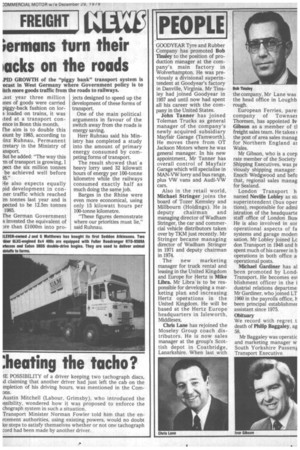Fi_ 1 22rr Law ;ermans turn their
Page 15

If you've noticed an error in this article please click here to report it so we can fix it.
lacks on the roads
PID GROWTH of the "piggy bank" transport system is ecast in West Germany where Government policy is to itch more goods traffic from the roads to railways.
..ast year three million Ines of goods were carried piggy-back fashion on lors loaded on trains, it was tted at a transport conence in Bonn this month, [he aim is to double this iount by 1985, according to inz Ruhnau, Permanent cretary in the Ministry of msport.
3ut he added: "The way this m of transport is growing, I pect the six million tonnes be achieved well before 352, Fie also expects equally pid development in conrier traffic which reached !in tonnes last year and is pected to be 12.5m tonnes 1985.
The German Government s invested the equivalent of Dre than £1000m into pro jects designed to speed up the development of these forms of transport.
One of the main political arguments in favour of the switch away from the roads is energy saving.
Herr Ruhnau said his Ministry has completed a study into the amount of primary energy consumed by competing forms of transport.
The result showed that a heavy lorry used 32 kilowatt hours of energy per 100-tonne kilometre while the railways consumed exactly half as much doing the same job.
Barges in the Rhine were even more economical, using only 15 kilowatt hours per 100-tonne kilometre.
"These figures demonstrate where our priorities must lie," said Ruhnau.












































































